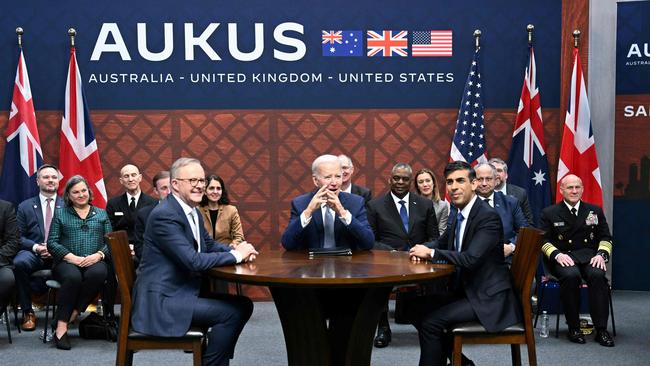
Wang’s meeting with Keating is unprecedented. Keating is running an extremely aggressive campaign against Anthony Albanese’s foreign policy, particularly, but not exclusively, AUKUS. Keating routinely speaks of the Prime Minister and Foreign Minister with contempt.
The Albanese government has been weak and foolish to let Keating’s abuse go by without answer. They are licensing Keating to destroy support for their entire approach to national security among the Labor base. Keating is a bully and his contributions these days often enough barely coherent, but you don’t win political battles by not fighting.
That the Chinese despise AUKUS so obsessively is the single strongest argument in its favour. However, the Chinese are perhaps needlessly paranoid.
The AUKUS partners are themselves, by their own actions, reducing AUKUS to fantasy and symbolism. Each AUKUS nation is reducing its military capabilities and effective defence budgets.

That assuredly includes Australia, which runs the most ineffective defence policy of all. The governments of all three nations have proclaimed these as perilous times, as exceptionally dangerous strategically, but each is addicted to ever increasing transfer and welfare payments, social spending generally, and massively expensive green energy transitions. As a result, each is grievously underspending on defence, not remotely meeting their own benchmarks on military capability.
All three AUKUS defence forces are declining against key metrics. Joe Biden just presented a defence budget with a nominal increase of 1 per cent. After inflation, that’s a real decline in the defence budget. According to some estimates, in real terms it’s about $US140bn less than the US defence budget in 2010. Not only that, the uniformed ranks have received pay rises of more than 4 per cent. So defence numbers and capabilities must decline. The US Army is shrinking. The US budget plans for an army of 442,000, whereas two years ago the figure was 485,000.
The US Navy is worse. For years it has said it needs a fleet of 355 ships. It has 296 ships today and is planning to shrink to 287. Every year it retires more ships than it brings into service.
Famously, the Biden administration has decided to build one nuclear attack submarine in 2025 rather than two. It is already 17 subs short of what it regards as an adequate fleet. It needs to build more than 2.3 subs a year if it’s going to be comfortable selling us one in 2032. That now looks extremely uncertain.
No one in Australia seems to have noticed another US decision, which is to delay by a decade the next generation of nuclear attack submarine, SSN(X), to succeed the Virginias. This was originally supposed to begin production in 2031. That was postponed to 2035. Now it will begin production in 2041. The delay is budgetary.
This move has important implications for the AUKUS submarines. We are supposed to acquire initially three to five Virginias from the US – this looks really shaky – then move to a British-led AUKUS submarine that is allegedly going to have all kinds of common features with the SSN(X). That generation of subs is now a prodigiously long way off.
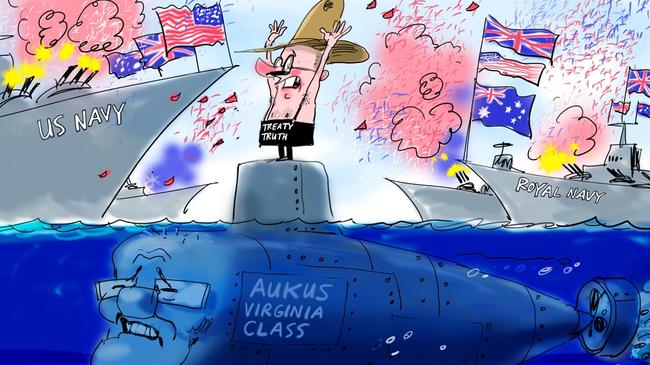
Theoretically, we plan to be run three types of subs simultaneously: the Collins, the Virginias and the first of the AUKUS subs. This degree of logistical complexity and division would be beyond any navy in the world. Certainly it will be beyond our navy. No one is worried too much about it because it’s all a kind of dreamland fantasy.
The Brits, God bless them, are in much worse shape than the Americans. Their Defence Secretary, Grant Shapps, says we are living in “a pre-war time”. That means defence preparedness must be pretty urgent, yes?
Well, sadly, no. By 2025 the British Army will be about 72,000 strong, whereas it was 102,000 when the Conservatives took office in 2010. The British defence budget is pretty opaque, but much like America the budget is increasing nominally by less than 1 per cent while costs are going through the roof. Capital expenditure in particular is in decline.
However, both the US and Britain are perfect models of resolute and swift action compared with Australia, which runs surely the most incoherent and ineffective defence policy, weight for age, in the world.
The Australian public has been socialised into the absolute importance of the US alliance to our security, and into the history and legacy of our soldiers’ heroism. They have not remotely been socialised into regarding the contemporary Australian Defence Force as having any security importance, even less so Australian defence industrial capacity.
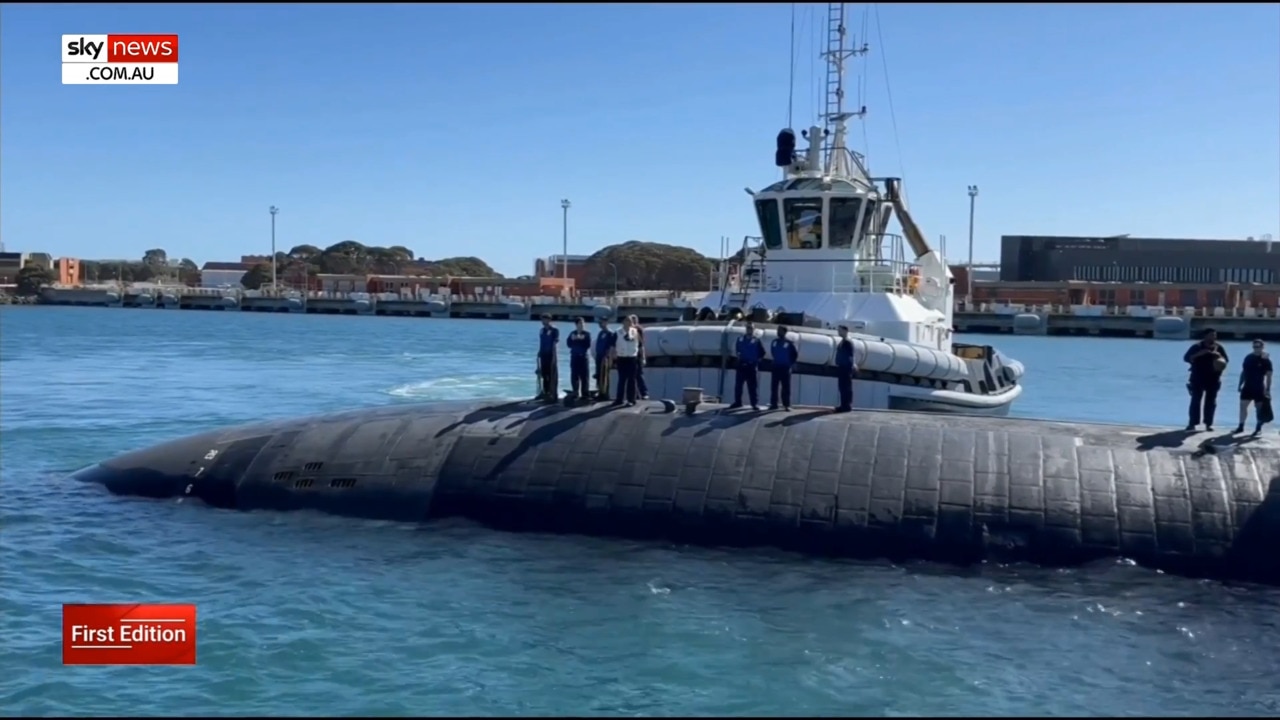
At most, in the popular mind that means jobs, but not security. Otherwise we would never have chased the car industry out of the country. At the same time, defence technology, like medical technology, is becoming more capable and more expensive, except for drones and to some extent missiles, both of which we effectively shun. For we still have not one single armed drone in our defence force and our holdings of missiles are minuscule.
At the end of last month the government released its Defence Industry Development Strategy. It was apparently so ashamed of this turgid document it made its release as low key as possible. The document is a mixture of every cliche from every planning document over the past 30 years, the usual impenetrable and unspeakably turgid Defence bureaucracy prose and a vague business-as-usual approach, combined with a few startling oddities.
For example, as Strategic Analysis Australia director Michael Shoebridge has pointed out, it defines Australian sovereign capability thus: “Australia’s defence industry is comprised of businesses with an Australian industrial capability and an Australian Business Number providing products or services used in, or which can be adapted to be used in, the Australian Department of Defence supply chain and/or an international defence force supply chain. This is Australia’s sovereign defence industrial base.”
This a ludicrous definition, almost completely meaningless. As Shoebridge notes, under this definition Huawei, banned from participating in Australia’s 5G network, and Landbridge, the Chinese company that has control of the Darwin port, are part of Australia’s sovereign defence capability. The worst thing about the document is its extreme lack of urgency, lack of ideas, lack of any sense of the way the world has changed.
The Ukrainians, the Houthis in Yemen and before that the war between Armenia and Azerbaijan have all shown the extraordinary new military effectiveness of armed drones.
Drones are not everything but they offer magnificent opportunities in asymmetric warfare. They have the capacity to be cheap, numerous and deadly, to swarm an enemy, to overcome even sophisticated defences. Our policy documents exhibit indifference to this, instead continuing to pin our hopes on giant platforms such as the Hunter-class frigate, already six years in the making and another decade to go before we get one. And even then it will be radically undergunned.
The Defence Industry Development Strategy manages at least to mention autonomous systems as a priority, but the only platforms it cites by name are huge, lumbering, giant systems. These are so expensive we’ll be able to acquire them only in tiny numbers and they’ll be too few and too expensive for us ever to deploy them in battle.
The Albanese government’s defence strategy documents belong in the fantasy fiction section of the bookshop. Alas, the Chinese have nothing much to worry about here.



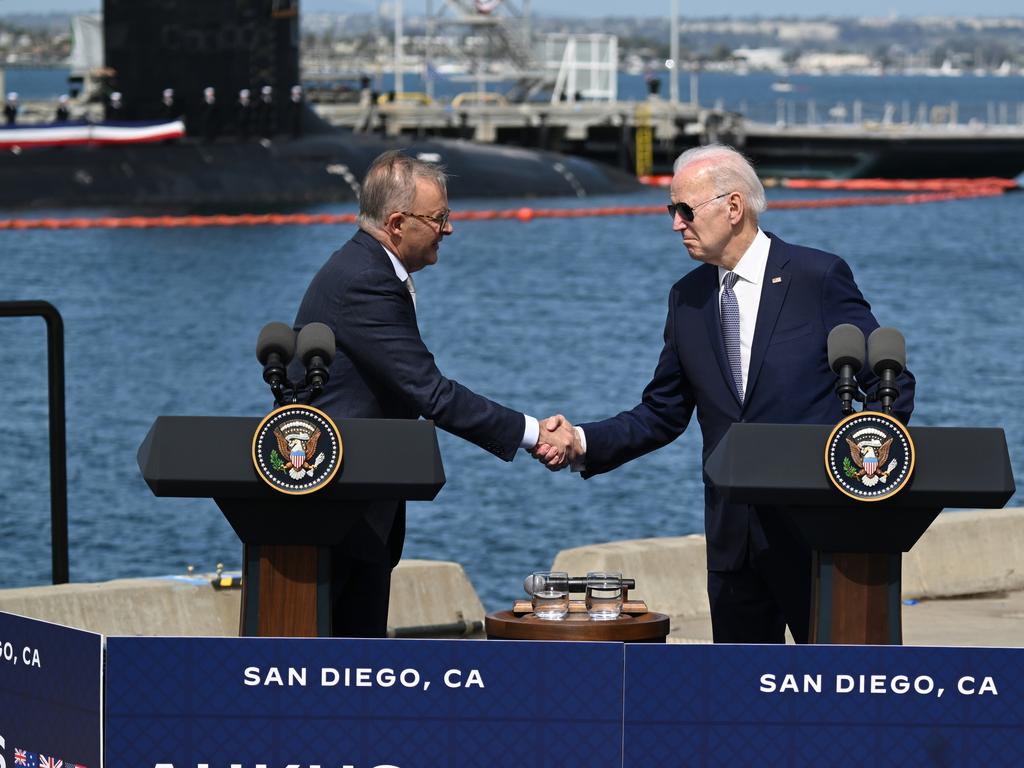

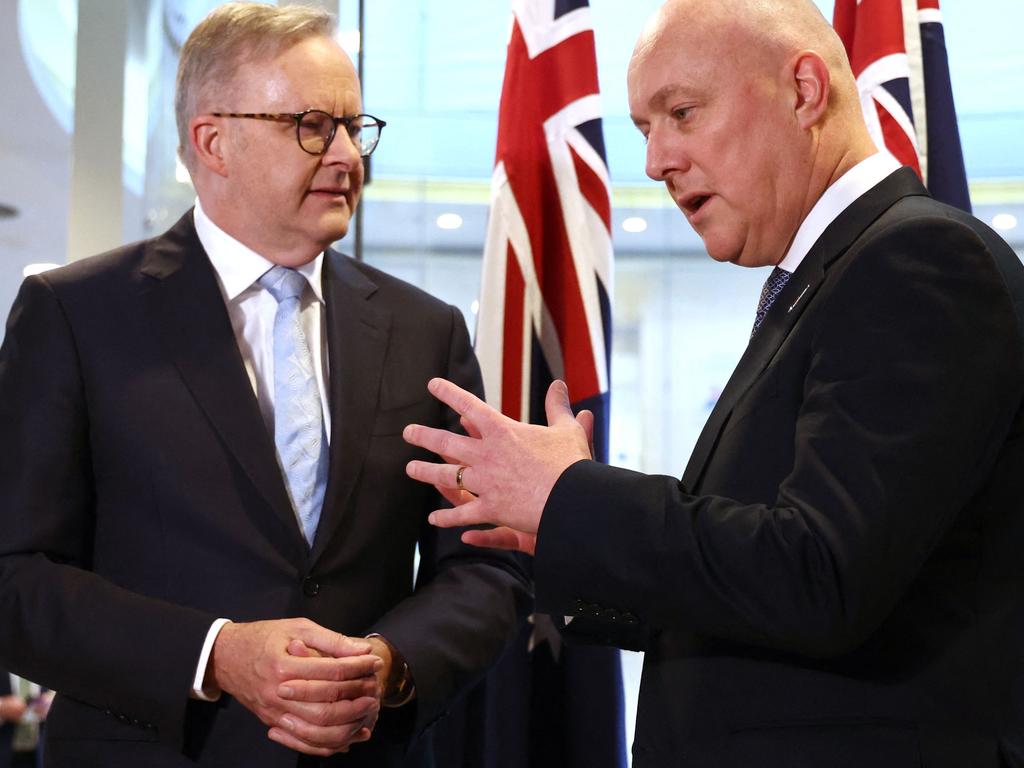


Chinese Foreign Minister Wang Yi arrives in Australia determined to humiliate the Albanese government, especially Penny Wong. He will do this by preposterously magnifying the Albanese government’s most abusive foreign policy critic, Paul Keating.